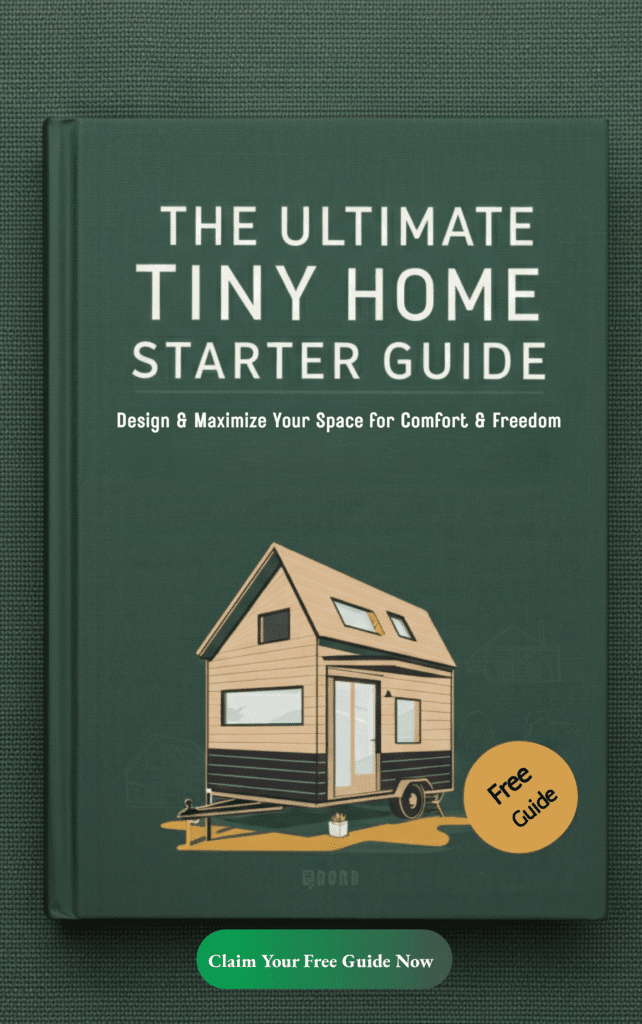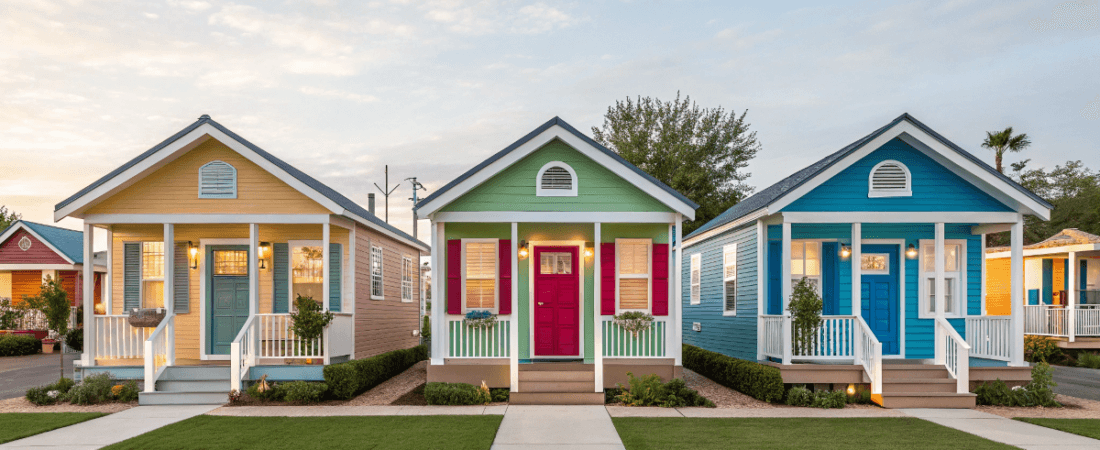Curious about tiny homes in Washington, DC? Tiny homes offer a practical and eco-friendly living solution in the city. This article covers the benefits of DC tiny homes, top builders, buying and renting options, and future trends.
- Key Takeaways
- Exploring Tiny Homes in Washington, DC
- Top Tiny Home Builders in DC
- Buying a Tiny Home in DC
- Renting a Tiny Home in DC
- Tiny Home Communities in DC
- Accessory Dwelling Units (ADUs) in DC
- Legal Considerations for Tiny Homes in DC
- The Future of Tiny Homes in DC
- Summary
- Frequently Asked Questions
- What are the typical sizes of tiny homes in Washington, DC?
- How much does it cost to buy a tiny home in Washington, DC?
- Can I rent a tiny home in Washington, DC?
- What are Accessory Dwelling Units (ADUs), and how do they relate to tiny homes in DC?
- What legal considerations should I be aware of when building a tiny home in Washington, DC?
Key Takeaways
Tiny homes in Washington, DC provide affordable and sustainable living solutions, effectively addressing the housing crisis while promoting community engagement.
Leading builders like Minim Homes and Four Brothers Design + Build are redefining compact living with innovative designs that prioritize efficiency, sustainability, and customization.
Recent changes in zoning laws in DC are encouraging the growth of tiny home communities and accessory dwelling units (ADUs), enhancing affordable housing options in the city.
Exploring Tiny Homes in Washington, DC

Tiny homes, defined as compact living spaces typically ranging from 100 to 400 square feet, are making a significant impact on urban living in Washington, DC. These dwellings focus on maximizing space efficiency, allowing residents to live comfortably in smaller footprints. The appeal of tiny homes extends beyond their size; they promote a minimalist lifestyle that encourages sustainability and personal freedom. Imagine waking up each day in a space that is both functional and environmentally friendly, where every square foot is utilized to its fullest potential.
Tiny homes offer numerous benefits. They offer a solution to the affordable housing crisis by providing a cost-effective alternative to traditional housing. Moreover, tiny homes foster a sense of community among residents, who often share common spaces and resources.
This communal aspect is particularly appealing in urban cities environments where social connections can sometimes be hard to forge. Embracing tiny homes offers Washington, DC residents an economical, enriching, and sustainable lifestyle.
Top Tiny Home Builders in DC

As the tiny home movement gains momentum in Washington, DC, several builders are leading the charge with innovative and high-quality designs. These builders are not only creating tiny homes but also redefining what it means to live in a compact space.
Let’s explore some of the top tiny home builders in the DC area who are helping residents turn their dream homes into reality.
Minim Homes
Minim Homes stands out for its contemporary and sustainable designs, focusing on how design impacts lifestyle. Their tiny homes are known for their efficient use of space and modern aesthetics, making them a popular choice for those looking to downsize without compromising on style. Minim Homes offers floor plans and structural components for sale, allowing homeowners to customize their tiny homes to suit their unique needs and preferences.
The appeal of Minim Homes lies in their commitment to sustainability and innovation. Their emphasis on environmental impact results in solutions that blend beauty with eco-friendliness. Whether you’re looking to build a tiny home from scratch or purchase a ready-made model, Minim Homes offers a range of options to fit your vision.
Four Brothers Design + Build
Four Brothers Design + Build is another prominent name in the tiny home industry, known for their bespoke and high-quality designs. The founders, who started as woodworking apprentices, bring a unique perspective to their architectural firm, blending craftsmanship with innovative design. Their tiny homes are tailored to meet the specific needs and preferences of their clients, ensuring that each home is one-of-a-kind.
The firm’s background in woodworking provides a strong foundation for creating custom designs that are both functional and aesthetically pleasing. Whether you’re looking to build a tiny home on wheels or a stationary dwelling, Four Brothers Design + Build offers a range of solutions to bring your vision to life.
Local and Nearby Builders
In addition to well-known builders like Minim Homes and Four Brothers Design + Build, several local and nearby builders are making significant contributions to the tiny home movement in DC. Liberation Tiny Homes, for instance, offers both prefabricated and custom design options, catering to a variety of preferences and budgets. Their innovative housing solutions are helping to expand the tiny home market in the area.
Bartley Trailers is another notable builder providing diverse offerings in the tiny home space. These local builders are essential in driving the growth of tiny home villages and fostering a sense of community among residents. Their range of designs and customization options ensures everyone can find a tiny home that suits their needs.
Buying a Tiny Home in DC

Purchasing a tiny home in Washington, DC, is an exciting venture that offers both affordability and flexibility. The cost of tiny homes in the area typically ranges from $29,000 to $130,000, making them a cost-effective alternative to traditional housing. Building a tiny home from scratch generally costs between $30,000 and $90,000, depending on the design and materials used. This affordability makes tiny homes an attractive option for those looking to own property in the capital without breaking the bank.
The process of buying a tiny home in DC involves several steps, including land acquisition, obtaining permits, and construction. Purchasing a property usually takes between 1.5 to 2 months, while constructing a new tiny home can take over six months.
With an average construction cost of around $199 per square foot, potential homeowners should also consider additional expenses such as land and permits. Despite these costs, the overall investment in a tiny home can be significantly lower than traditional housing, making it a viable option for many.
Renting a Tiny Home in DC
If buying a tiny home isn’t the right fit, renting offers a convenient and flexible alternative. Tiny homes available for rent in Washington, DC, often come with modern amenities and unique designs, such as A-frame styles and loft layouts. These rentals provide a cozy and comfortable living experience, allowing residents to enjoy the benefits of tiny home living without the long-term commitment of ownership.
Many rental tiny homes are located on large plots of land, offering privacy and outdoor recreational opportunities. This setup allows residents, as well as the owner, to enjoy a serene environment while still being within walking distance of the urban amenities of Washington, DC, and the surrounding properties.
Whether you’re looking for a short-term stay or a longer rental period, there are plenty of options to explore in the tiny home rental market.
Tiny Home Communities in DC

Tiny home communities are gaining traction in Washington, DC, as they offer solutions for affordable housing and foster a sense of community among residents. These communities provide a supportive environment where residents can share resources and engage in communal activities.
However, establishing these communities can be challenging due to restrictive zoning laws and the difficulty of finding suitable land.
Takoma Village Cohousing
Takoma Village Cohousing is a community that spans multiple generations. It features 43 tiny homes and flats that are privately owned. This community emphasizes collaboration and mutual support, with residents engaging in joint tasks such as maintenance and cooking meals together. The diverse population of Takoma Village enhances interpersonal relationships and creates a supportive environment where members can thrive.
The communal activities at Takoma Village Cohousing strengthen the bonds among residents and foster a sense of belonging. Participating in these activities helps members build strong connections and support each other in daily life.
Blue Moon Rising
Blue Moon Rising offers a unique take on tiny home living with its 15 tiny house vacation rentals. Each tiny house features a distinct design, providing guests with a one-of-a-kind living experience. The community at Blue Moon Rising encourages residents to participate in various outdoor activities, such as skiing, boating, horseback riding, swimming, and white-water rafting.
This environment allows guests to recharge and reconnect with nature while enjoying the comforts of a well-designed tiny home, which can serve as a stepping stone to their dream home. Blue Moon Rising demonstrates the potential of tiny home communities to offer both comfortable living spaces and enriching experiences.
Accessory Dwelling Units (ADUs) in DC
Accessory dwelling unit (ADUs) are becoming increasingly popular in Washington, DC, as a way to address the city’s affordable housing crisis. These units provide below-market rental options to eligible households, making them a valuable tool in the fight against housing unaffordability. ADUs are designed to be affordable and are often created in exchange for benefits like zoning exemptions or tax incentives.
New zoning regulations in DC are set to simplify the approval processes for building and renting tiny homes, potentially increasing their availability. The District’s Department of Housing and Community Development oversees compliance with ADU regulations, ensuring that these units meet specific provisions regarding affordability and income limits.
Promoting ADUs in Washington, DC, can increase affordable housing options and support diverse communities.
Legal Considerations for Tiny Homes in DC
Navigating the legal landscape for tiny homes in Washington, DC, involves understanding building codes and zoning laws. The city uses the 2015 ICC model codes (excluding Appendix Q), 2014 National Electrical Code, and 2013 ASHRAE 90.1 as its building codes. Zoning laws may require that the primary house on a property adjacent to a tiny home meet a minimum size requirement, often around 1,200 square feet, with some variations based on zoning classifications.
New zoning regulations are expected to simplify the process for constructing tiny houses, allowing homeowners to build and rent these small dwellings under certain guidelines. Tiny homes on foundations are permitted in specific neighborhoods, typically as accessory dwelling units, and must adhere to requirements such as being no more than 35% of the gross floor area of the primary home and being situated near specific alley widths or main roads for fire safety compliance.
The Future of Tiny Homes in DC

The future of tiny homes in Washington, DC, looks promising, thanks to recent changes in zoning laws that promote micro-housing solutions. These changes are seen as beneficial for addressing housing shortages and accommodating the influx of new residents. Despite the challenges of limited space and high demand for development, the new regulations present opportunities for innovation and creative solutions in tiny home development.
As more people recognize the benefits of tiny homes, such as affordability, sustainability, and community living, the movement is likely to grow. With the support of local authorities and innovative builders, tiny homes could become a significant part of the urban landscape in Washington, DC, providing residents with a viable and appealing housing option.
Summary
Tiny homes are revolutionizing urban living in Washington, DC, by offering sustainable, affordable, and community-oriented housing solutions. With top builders like Minim Homes and Four Brothers Design + Build leading the way, residents have access to high-quality, innovative designs. Whether buying, renting, or joining a tiny home community, there are numerous options available to suit diverse needs and preferences.
The future of tiny homes in DC looks bright, with new zoning laws and regulations paving the way for increased availability and innovation. As the city continues to embrace these compact dwellings, tiny homes have the potential to address the affordable housing crisis and create vibrant, supportive communities. Now is the time to explore the possibilities and consider how tiny homes can enhance your urban living experience.
Frequently Asked Questions
What are the typical sizes of tiny homes in Washington, DC?
Tiny homes in Washington, DC, typically range from 100 to 400 square feet, designed to maximize space efficiency and promote a minimalist lifestyle.
How much does it cost to buy a tiny home in Washington, DC?
The cost of purchasing a tiny home in Washington, DC, ranges from approximately $29,000 to $130,000, with construction expenses generally between $30,000 and $90,000 based on design and materials. This price range reflects the diverse options available in the market.
Can I rent a tiny home in Washington, DC?
Yes, you can rent a tiny home in Washington, DC, as there are several options available that feature modern amenities and unique designs for a cozy living experience.
What are Accessory Dwelling Units (ADUs), and how do they relate to tiny homes in DC?
Accessory Dwelling Units (ADUs) are secondary housing units on single-family lots that address the affordable housing crisis in Washington, DC, often serving as below-market rental options. They relate to tiny homes by providing similar small-scale living solutions within existing residential areas.
What legal considerations should I be aware of when building a tiny home in Washington, DC?
It is essential to abide by Washington, DC’s building codes, zoning laws, and fire safety regulations when constructing a tiny home. Ensure that you meet the size requirements for the primary residence on your property and follow the applicable ICC and electrical codes.



